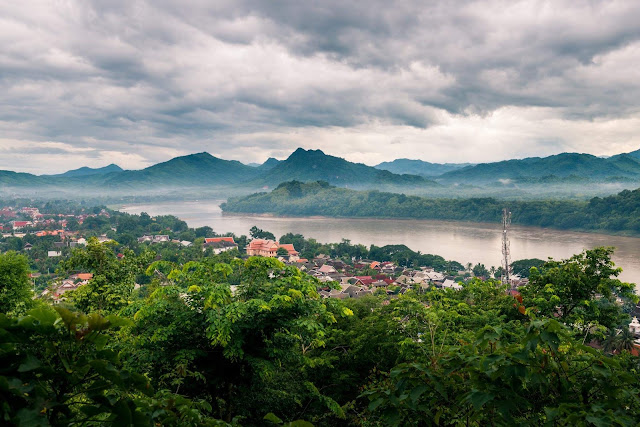Asia is a continent that offers something for everyone, from
Thailand’s magnificent beaches to
Beijing’s famed shopping districts and the temples of
Hanoi, you’re practically guaranteed to discover your perfect
destination.
Singapore, with a cityscape that looks as if it was ripped right out of the pages of a sci-fi book, has become an economic powerhouse over the past half-century, with a high standard of living and numerous reasons to visit. It’s considered a shopper’s paradise with its numerous malls, though it also offers magnificent architecture, culture and amazing public art along with a slice of horticultural heaven with its Gardens by the Bay and Singapore Botanic Gardens. Many visitors come for the incredible food, with the melding of cultures, cuisine and natural beauty evident in every area of the city. Feast on nasi lemak, a
Malaysian dish of coconut rise, anchovies, cucumber and chili paste; bak kut the, a clear
Chinese soup cooked with pork ribs and five spices and even delectable British crumpets for tea.
This city on the central Vietnamese coast is one of the coolest towns in Southeast Asia, with its center a national heritage zone, which means no motorized vehicles are allowed. Stroll the cobblestone streets lined with charming shops and cafés, lit with lanterns and loaded with history. Once a month, during the full moon, the town trades its electric lights for traditional colored lanterns, while performers and musicians fill the streets with song. Hoi An is also the home of some of the best tailors in the entire country – bring a photograph of something you like and they’ll whip it up for you in a matter of hours, at almost unbelievably cheap prices too.

Seoul is a lively, economic powerhouse, the business and cultural hub of South Korea. Here skyscrapers tower over Buddhist temples. From the N Seoul Tower, built atop a peak in Namsan Park, visitors can take in the entire scene. Enjoy incredible food, with nearly all ingredients locally grown, often featuring grilled cuts of beef and unlimited portions of side dishes, including soups, fresh vegetables and spicy sauces, all served at the table. You’ll also find a thriving nightlife, friendly people and a fascinating culture with a “work hard, play hard” mentality.

Filled with contrasts, in Taipei you’ll find peaceful parks encircled by hectic streets and traditional markets right next to some of the trendiest boutiques. It’s old enough to have a fascinating history, yet modern enough to get Wi-Fi coverage everywhere you go. Food lovers will be in heaven, as not only can you eat well, but you can eat very cheaply. Even in eateries that don’t exactly look sophisticated, you’ll find the quality of the food is superior and there are almost an overwhelming number of options. In addition to local Taiwanese dishes, you’ll find regional cuisines from across China along with outstanding Japanese, Indian and even Italian fare.

Hong Kong, a Special Administrative Region of China, is one of the world’s leading financial, banking and trading centers and a gateway between East and West. You’ll find amazing dim sum, floating islands and a one-of-a-kind skyline. Enjoy tea in the elaborate lobby of the Peninsula Hotel, accompanied by music from a string ensemble, view traditional Chinese architecture in Ngong Ping village and then take the tram to the top of Victoria Peak for unparalleled views. The city also has more than 200 offshore islands, like Lantau Island, which offers a rare glimpse into the life of rural Hong Kong. After dark, take in the real-life version of Disney’s Electric Light Parade, when Hong Kong skyscrapers come to life at 8 p.m. every night in a magical show set to a stirring soundtrack.

In Tokyo, traditional collides with pop culture, offering everything from belting out a song at a karaoke bar to reverently wandering through ancient temples. While it’s chaotic, crowded and expensive, everything is incredibly clean and the people are extremely polite. “Cosplay” is popular among young people, and they often use it to pay homage to favorite anime, movie, or comic book characters, which means you’ll see some intricate and impressive ensembles, especially in the hip, edgier Harajuku District. There are more Michelin-starred restaurants here than in Paris – the food is fresh, rich, and delicious – indulge in as much sushi, udon noodles, and wagashi as your belly can handle.
Read more: Where to go in Asia for summer vacations
Siem Reap has been called the “perfect destination” for first-time travelers to Asia. This capital city in northwestern Cambodia is easy to get around, and you’ll find attractions on nearly every corner, with friendly people, lots of history, culture, nightlife, museums, markets and opportunities for relaxing as well as taking part in adventurous activities. When the morning light washes across the temples and ruins of Angkor Wat, the city looks like a breathtaking painting come to life. Its ancient structures are found within one of the largest religious complexes in the world, with this complex and the 12 century Angkor Thom royal city, an expression of the true genius, considered the main reasons to visit. You can also get a fascinating lesson in national history at the Cambodian Cultural Village.
Source Internet




















































